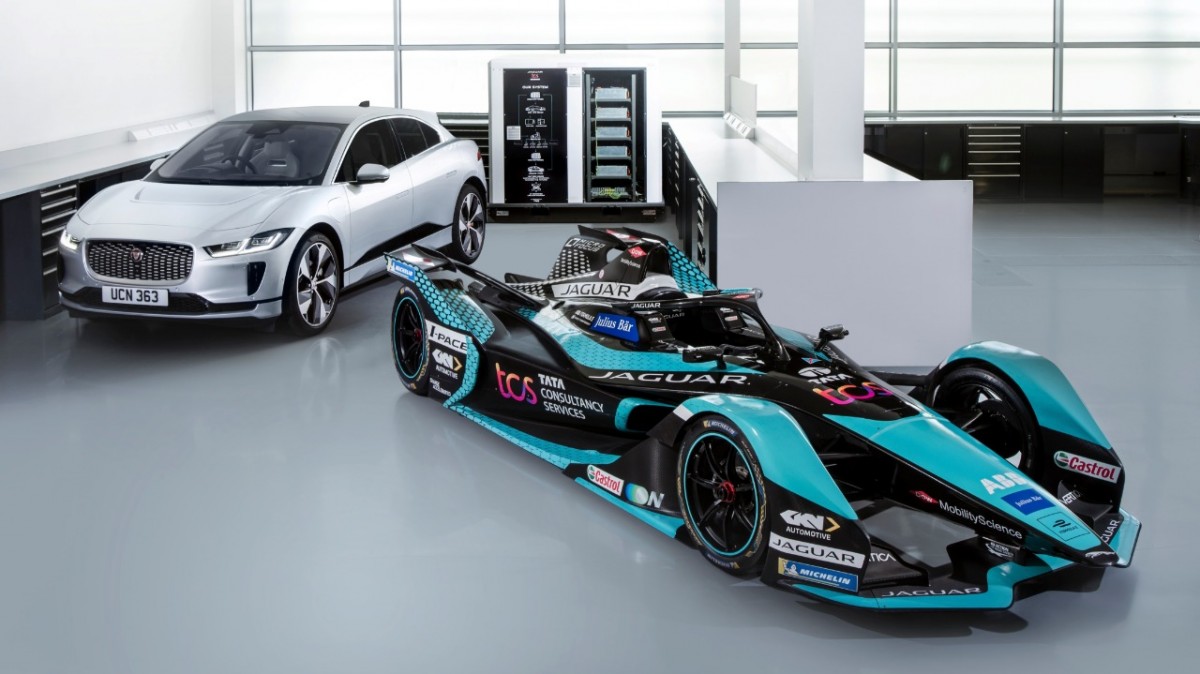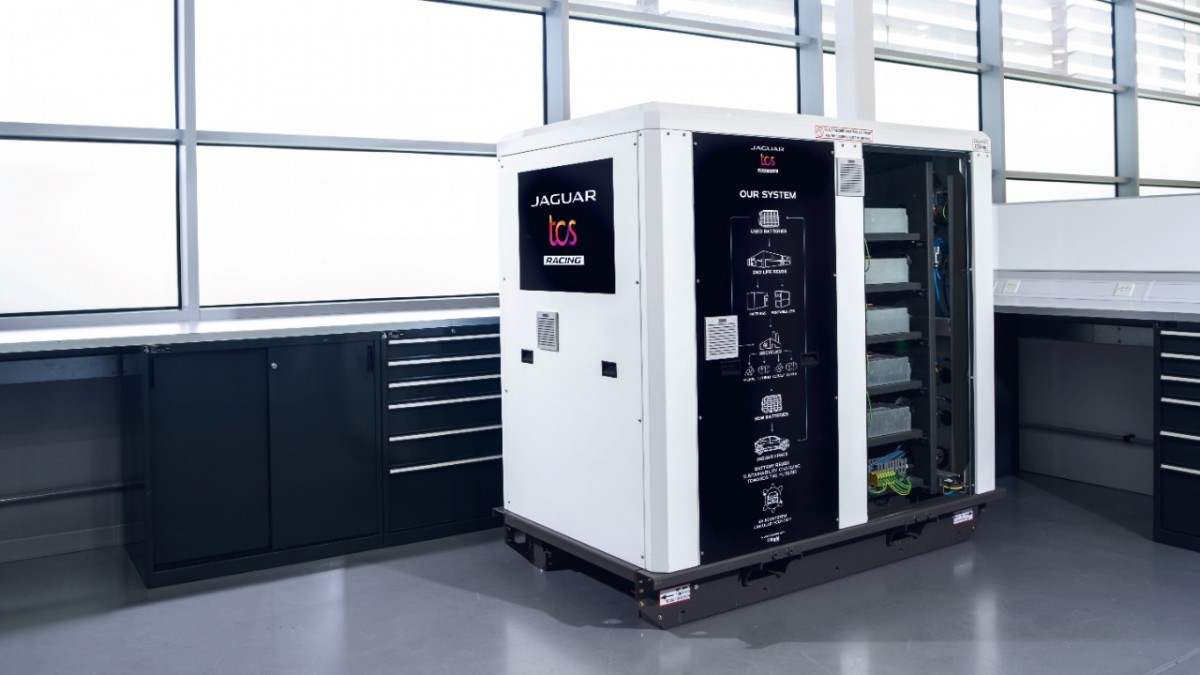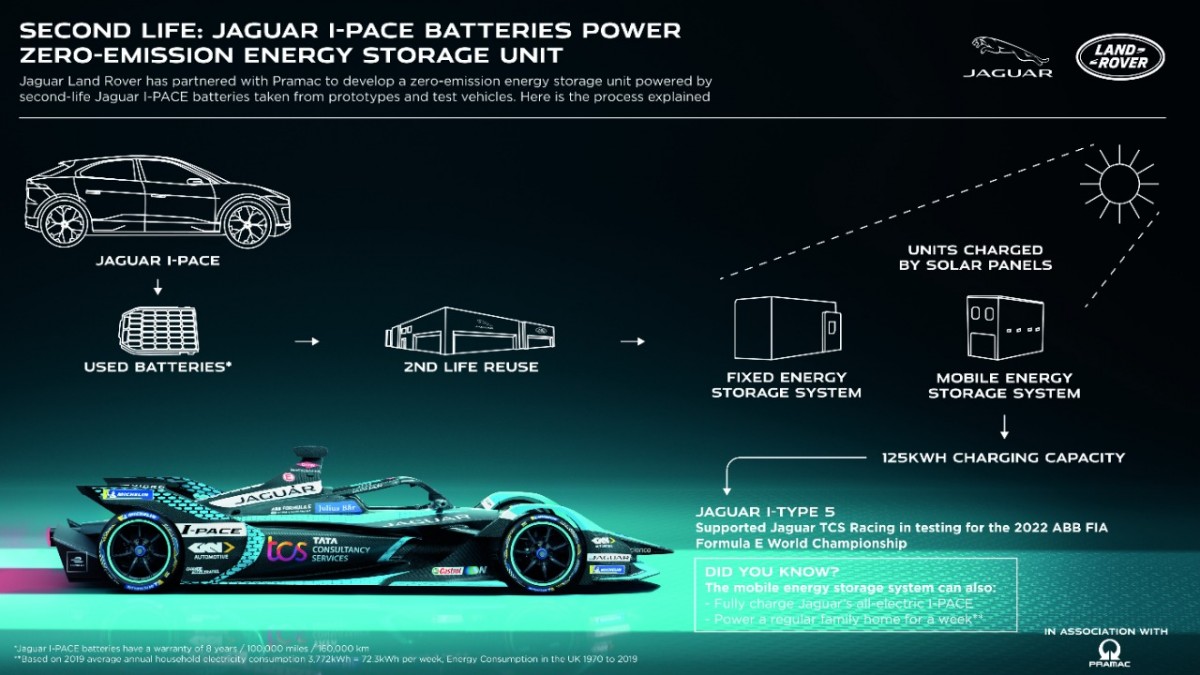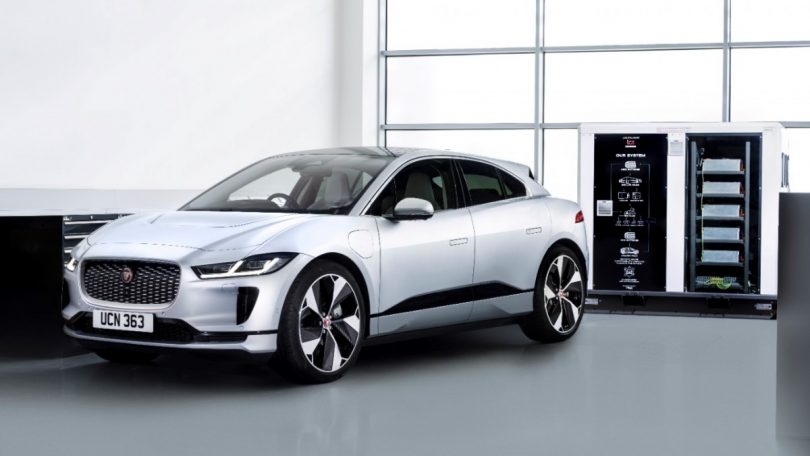British carmaker Jaguar has announced that its engineering team recently worked with Pramac to develop a zero-emission energy storage unit. Powering this storage unit are the second-life batteries from the Jaguar I-PACE along with Jaguar’s prototype and engineering test vehicles. Called the Off Grid Battery Energy Storage System (ESS) that, features Pramac’s technology, uses lithium-ion cells from one-and-a-half second-life batteries. This will result in the supply of zero-emission power to areas where access to the mains supply is typically limited or unavailable.
Testing for Formula E & Functionality
To showcase its capability, the ESS unit helped Jaguar TCS Racing prepare for the 2022 ABB FIA Formula E World Championship. The team used the device during its testing session in the UK and Spain to run its cutting-edge diagnostic equipment. Therefore, the equipment helped analyse the team’s race cars’ track performance and supplied auxiliary power to the pit garage. Jaguar TCS Racing’s testing and validation of the Off Grid Battery ESS demonstrated the race-to-road-to-race cyclical technology transfer.
The team used these learnings to, in turn, introduce a new software-over-the-air (SOTA) update for Jaguar’s I-PACE owners. This update helped the I-PACE to deliver a real-world range increase of up to 20 km, which is highly beneficial. With this achievement, Jaguar has come up with new cases where it can further use and assess the Off Grid Battery ESS. Meanwhile, the 2022 ABB FIA Formula E World Championship’s fourth and fifth rounds begin on 9th-10th April in Rome, Italy.
Benefits of the ESS via the I-PACE
The flagship ESS system has a capacity of up to 125 kWh which can easily charge the I-PACE to 100%. With the capability of being charged from solar panels, the ESS is a self-contained solution that sports a battery system. Pramac has ensured to link this system to a bi-directional converter and the associated control management systems for enhanced efficiency. Along with being fitted with Type 2 Electric Vehicle (EV) charge connections, the ESS is also available for commercial hire.
The charge connections on the ESS feature dynamic control with a rating that allows for 22 kW AC electric charging. Meanwhile, finding a second life for batteries after being removed from vehicles can avoid premature recycling and help supply raw materials. Therefore, the state-of-the-art, 90 kWh Lithium-ion battery in the Jaguar I-PACE develops 294 kW of power and 696 Nm of torque. This allows the I-PACE to accelerate from 0-100 Km/h in just 4.8 seconds with 470 Km of range.
Also Read: Mahindra to introduce Bolero camper van?





